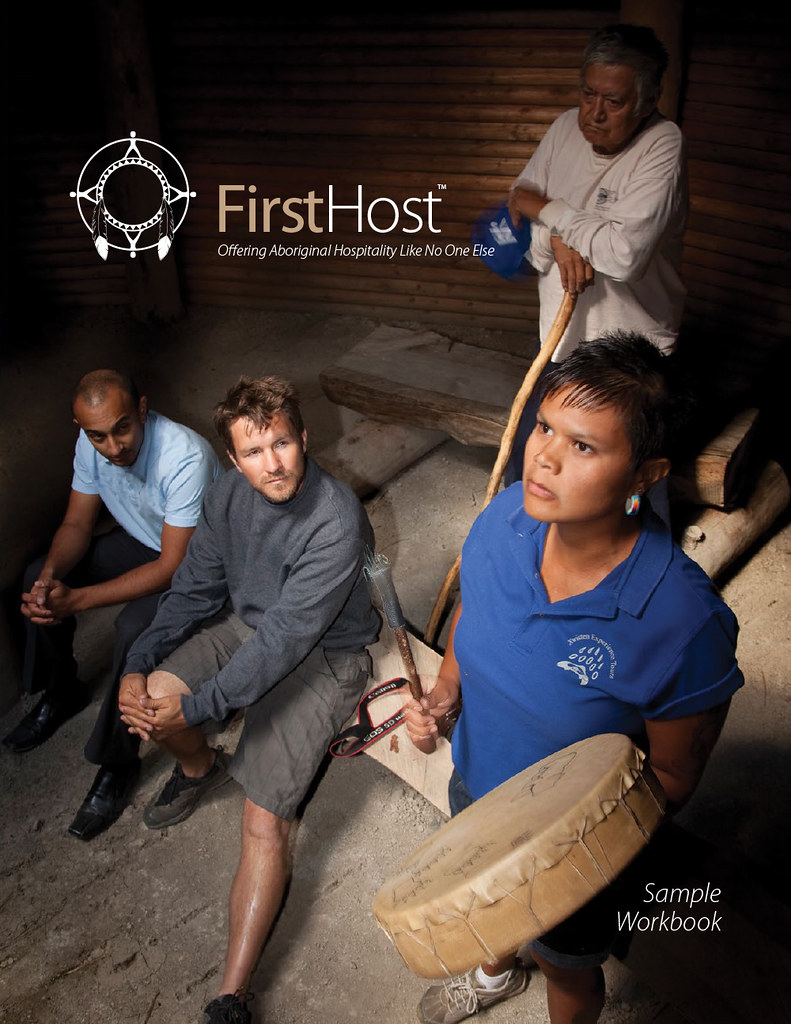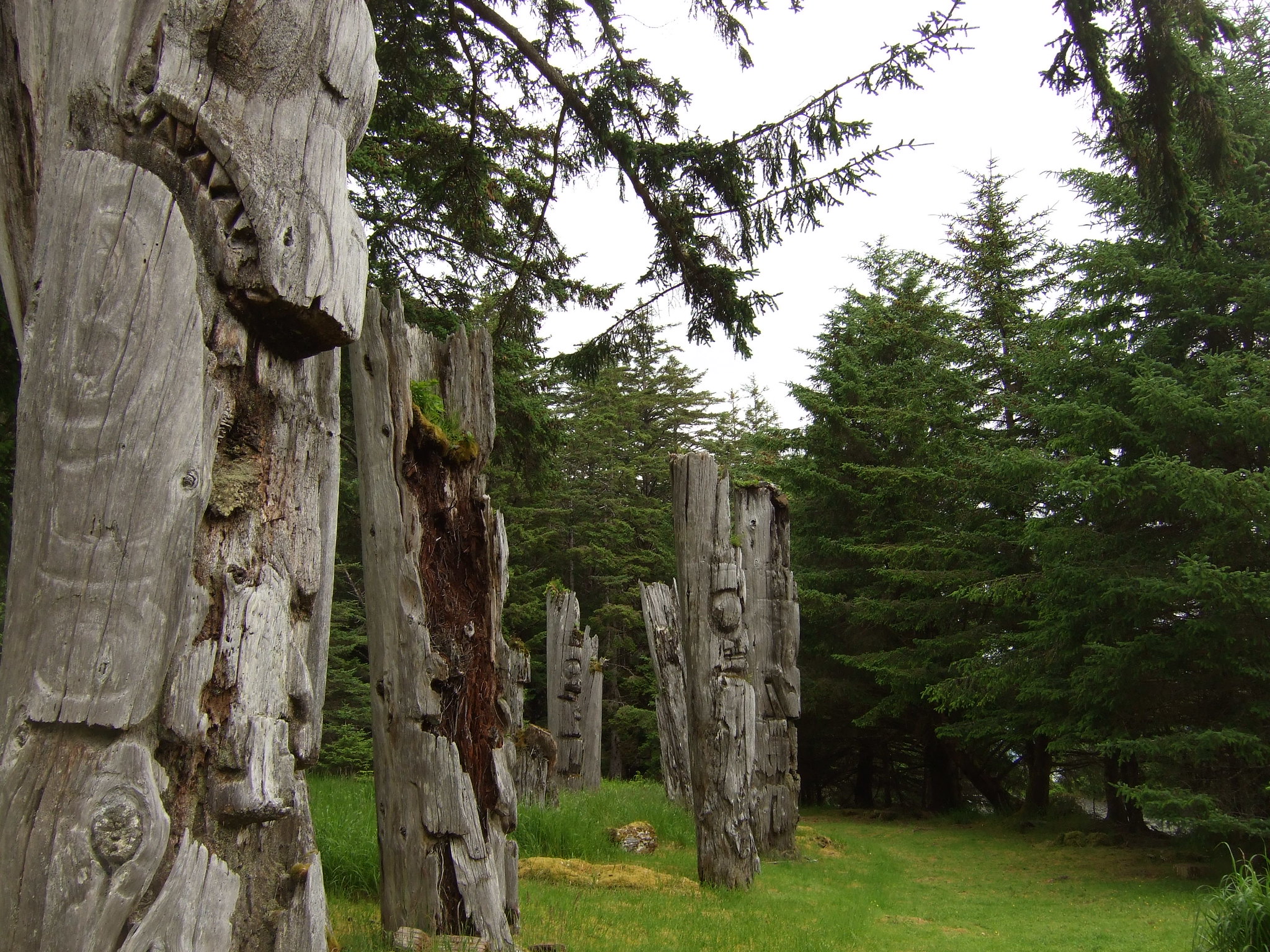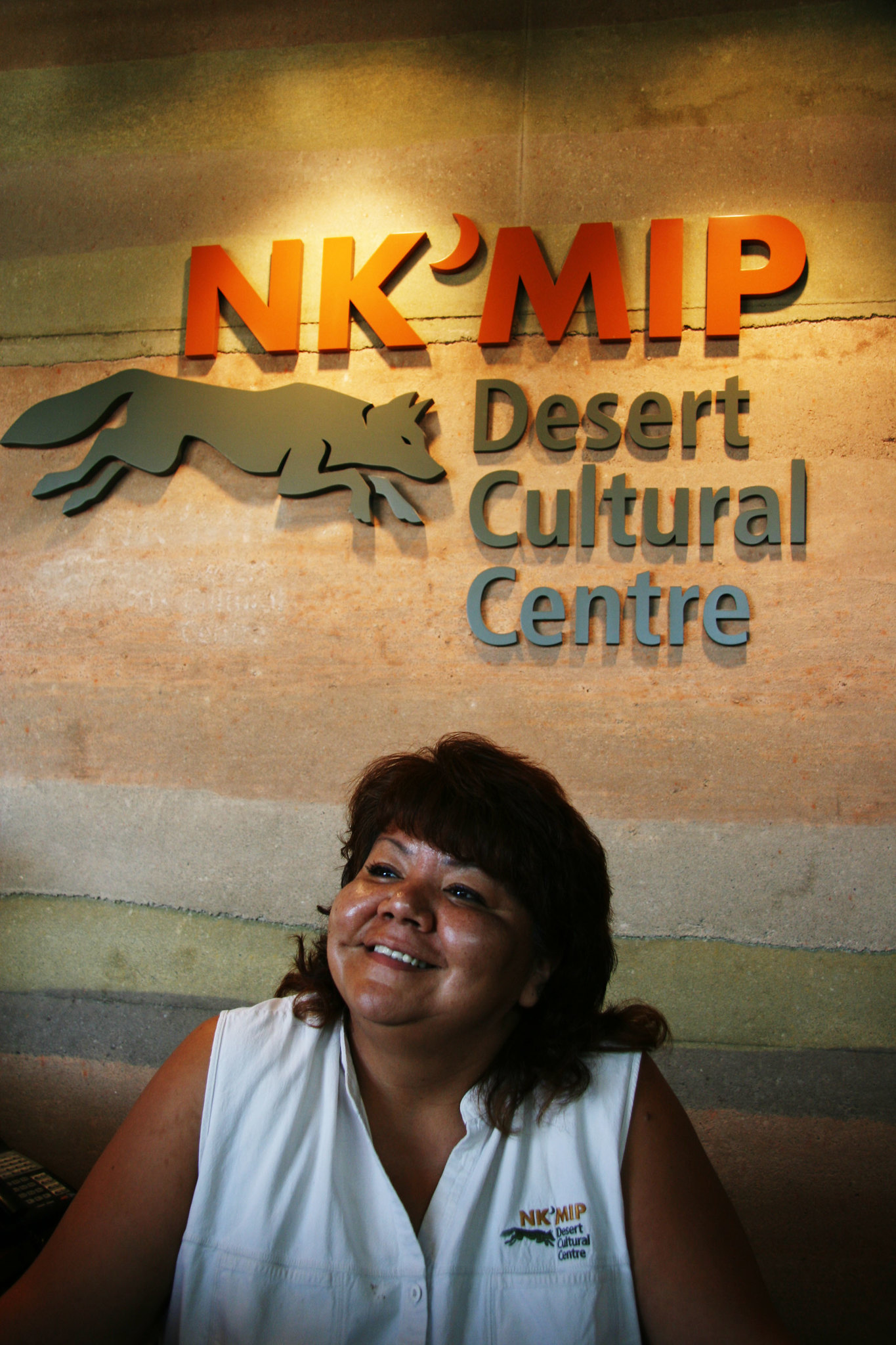68 12.4 Indigenous Tourism in BC
The Aboriginal Tourism Association of British Columbia (ATBC), now recognized as Indigenous Tourism BC (ITBC), was founded in 1996 and was spurred by a research project that detailed the changing motivations of visitors to BC. The research results identified that specific target markets were particularly motivated to visit BC to experience local or regional Indigenous culture. Leveraging this information and initial organizational momentum, ITBC has matured to become a stable and effective organization by establishing funding partnerships with governments, developing a stakeholder membership model, and initiating a range of development strategies and tactics outlined in regularly updated action plans.
ITBC provides recognized leadership to support the estimated 401 Indigenous tourism related businesses operating in BC. These businesses generate $705 million indirect gross domestic output and provides 7,400 direct full-time jobs for Indigenous and non-Indigenous residents in BC through their activities (ITBC, 2019).
Spotlight On: Indigenous Tourism BC
Indigenous Tourism BC (ITBC) has gained an international reputation for effectiveness. Its role is to encourage the professional development of Indigenous cultural experiences and destinations in the province and to then support marketing those businesses to the world.
For more information featuring market-ready Indigenous tourism experiences within BC visit the external consumer-focused ITBC website.
For more details about ITBC’s history, structure and planning tools visit the ITBC internal corporate and stakeholder-focused website.
Since its inception, ITBC has grown to represent a diverse range of stakeholder businesses and organizations, including campgrounds, art galleries and gift shops, hotels, eco-lodges and resorts, Indigenous restaurants and catering services, cultural heritage sites and interpretive centres, kayak and canoe tours, adventure tourism operations, and guided hikes through heritage sites (Aboriginal Tourism BC, 2012). It has also proven adept at online promotion and social media, has also become world renowned for its strategic approach to Indigenous tourism development.
Take a Closer Look: Indigenous Tourism Trip Planner App
Indigenous Tourism BC marketing staff are regularly updating not just their consumer website, but also their social media platforms with rich visual assets, including promotional videos for the sector, regions, and specific companies.
In 2020, they also released a new app for Indigenous Tourism trip planning, which includes some virtual experiences. Learn more by downloading it on your digital device at Indigenous BC Trip Planner App.
A Strategic Approach to Growth
In 2017, the organization now known as ITBC released its five-year strategic plan, entitled “Pulling Together,” which identified targets for Indigenous cultural tourism industry success in BC. Its goals by 2022 included:
- Increased provincial revenue of $75 million
- Employment at 4,950 full-time equivalent positions
- 128 market-ready Indigenous cultural tourism businesses
To achieve these targets, the plan focused on five distinct strategic performance areas:
- Marketing
- Experience Development
- Partnerships
- Leadership
- Organizational Excellence
Following good overall tourism planning principles, ITBC ensured its plan aligned with Destination BC’s strategy, Welcoming Visitors—Benefiting Locals—Working Together, A Strategic Framework for Tourism in BC, as well as Canada’s federal tourism strategy. Consistent with this sustained alignment, recent efforts have placed renewed emphasis on the need for market readiness.
Push for Market Readiness
As we’ve learned elsewhere in this textbook, today’s travellers are more complex than in the past and have higher expectations. Potential guests are well acquainted with technology and have the world at their fingertips. For this reason, it’s important that Indigenous operators ensure they are sufficiently ready to run as a tourism business and compete in an increasingly crowded tourism marketplace.
There are three categories of readiness, each with a set of criteria that must be met (Aboriginal Tourism Association of Canada, 2013):
- A visitor-ready operation is often a start-up or small operation that might qualify for a listing in a tourism directory but not be considered ready for cost-shared promotions with other businesses due to lack of amenities or predictability.
- A market-ready business must meet visitor-ready criteria plus demonstrate a number of other strengths around customer service, marketing materials, published pricing and payments policies, short response times and reservations systems, and so on.
- Export-ready criteria include the previous categories, plus sophisticated travel distribution trade channels to attract out-of-town visitors. They provide highly reliable services to all guests, particularly those traveling with groups.
By educating cultural tourism businesses about these standards, and then creating incentives for marketing opportunities, ITBC helps to raise the bar for BC Indigenous cultural tourism experiences. Its goal is to support as many operators toward market readiness (the second category) as possible so that they may eventually become export ready alongside other BC tourism experiences.
Take a Closer Look: Authentic Indigenous
Authentic Indigenous is a marketing initiative by Indigenous Tourism BC (ITBC) – a successful designation program that identifies strong cultural Indigenous tourism experiences as Authentic Indigenous. With this designation, ITBC meets the demands of travellers seeking unique, educational, eco-friendly and culturally appropriate experiences within Indigenous communities across BC. Find out more by visiting the Authentic Indigenous web page.
FirstHost

Another key component of the Indigenous tourism experience is the host. In BC, the FirstHost program supports the development of Indigenous hosts who are well trained, know what guests are looking for, and who can help provide an authentic cultural experience. The one-day tourism workshop is offered through ITBC and delivered throughout British Columbia
FirstHost was inspired by Hawaiian tourism pioneer, Dr. George Kanahele (1913-2000), who saw the impact tourism was having on indigenous culture and set out to educate the industry that “the relationship between place, host and guest must be one of equality” (Native Education College, 2014, p. 28). Participants learn about hospitality service delivery and the special importance of the host, guest, and place relationship. This well-received workshop, delivered by Indigenous trainers, is another reason Indigenous tourism continues to grow stronger in the province.
Take a Closer Look: Aboriginal Ecotourism Training Program
The Aboriginal Ecotourism Training Program (AETP) was born through a desire to increase workforce and community capacity for Indigenous tourism in coastal BC and developed in partnership between Vancouver Island University (VIU), North Island College (NIC), and the Heiltsuk Tribal Council (HTC), with support from Indigenous Tourism BC (ITBC) and funding through the Canada-British Columbia Job Fund.
Since 2014, 70 graduates from over 27 First Nations have successfully completed the Aboriginal Ecotourism Training Program (AETP) that features an innovative place-based, culturally relevant and experiential design to post-secondary learning. Many of these students have continued in the tourism sector or are engaged in ongoing post-secondary education in business and tourism.
Learn more through a video on the Aboriginal Ecotourism Training Program and the article Adventures in Ecotourism: Building Partnerships, Collaborations and Trust through Aboriginal Education.
Examples of BC Indigenous Tourism Development
Spotlight On: Moccasin Trails
Many exceptional leaders and entrepreneurs in Indigenous Tourism wear multiple hats. Besides family, community, and cultural responsibilities, this often includes many other complex roles within Indigenous Tourism development through sector, regional, and national associations, plus outreach as consultants beyond their own tourism business — sharing expertise that bridges cultures and systems.
One dynamic example is through the suite of tourism experiences, services and leadership offered by Frank Antoine and Greg Hopf of Moccasin Trails in the Kamloops area.
They describe that, “We wanted to bring people from around the world on the ancestral paths our people walked, have them taste the food we ate, sing the songs we sang, hear the stories that were passed down orally from generations ago, and travel down the rivers we canoed. In order to truly learn about our culture we felt the only way was to touch, smell, see, hear, and feel it. Our journey started hundreds of years ago but your journey will start right now with us at Moccasin Trails.
Their vision and motivation is very representative of the tangible, tireless and authentic energy that underlies much of Indigenous Tourism development.
Indigenous tourism in BC offers diverse visitor opportunities that range from arts and cultural attractions to authentic food and beverage experiences to wildlife tours that highlight the spiritual significance of BC’s natural places for Indigenous people.
Take a Closer Look: Indigenous Experiences — A Journey
The consumer website for Indigenous Tourism BC features things to do, places to see, trip planning tools, featured itineraries and stories. For more information, visit the Indigenous Tourism BC website.

Examples of BC Indigenous tourism enterprises include:
- The Bill Reid Gallery of Northwest Coast Art in the heart of downtown Vancouver, home of the permanent collection of Bill Reid as well as contemporary exhibitions.
- St. Eugene Golf Resort & Casino, a First Nation-owned 4.5-star hotel with a golf course and casino, outside of Cranbrook in the Kootenay Rockies.
- Cariboo Chilcotin Jetboat Adventures, offering exciting and scenic tours of the Fraser River.
- Salmon n’ Bannock Bistro, offering authentic Indigenous food in urban Vancouver.
- Spirit Bear Lodge, in the Great Bear Rainforest, specialize in wildlife and Indigenous cultural experiences.
- Talaysay Tours offering Indigenous cultural and eco-tourism experiences in and around Vancouver, Squamish and the Sunshine Coast.
- Skwachàys Lodge, a downtown Vancouver luxury hotel, art gallery and store operating as a social enterprise and supporting Indigenous artists.
Take a Closer Look: UNESCO World Heritage List
This list, evolving from 1972 World Heritage Convention, identifies outstanding significant sites across the globe, linking the concepts of nature conservation and the preservation of cultural properties. The convention sets out the duties of governments in identifying potential sites and their role in protecting and preserving them. The list features an interactive map and an alphabetical list. To explore the more than 1,100 properties on the list, including 20 sites in Canada, visit the UNESCO World Heritage List.
The village of SG̱ang Gwaay Llnagaay (formerly Ninstints or Nan Sdins) is a prominent example of a UNESCO World Heritage Site in Canada, located on a small island off the west coast of Haida Gwaii.
While ITBC members are too numerous to detail here, one BC First Nation is often in the spotlight for its significant tourism and economic development activity, thanks to its physical and cultural assets and positive leadership. Let’s take a closer look at this example.
Osoyoos Indian Band
The Osoyoos Indian Band (OIB) is located in the Interior of BC. A main goal of the OIB has been to move from dependency to a sustainable economy like that which existed before contact (Centre for First Nations Governance, 2013).
Take a Closer Look: Centre for First Nations Governance Success Stories
The Centre for First Nations Governance is a non-profit organization dedicated to providing self-governance support to First Nations communities across Canada. It helps with planning, governance, the establishment of laws, and nation-rebuilding efforts. Its website features success stories, in video format, that highlight these efforts. For more information, visit the Centre for First Nations Governance website for Success Stories.
Okanagan First Nations once travelled widely to fish, gather, and hunt. Each year, the first harvests of roots, berries, fish, and game were celebrated during ceremonies honouring the food chiefs who provided for the people. During the winter, people returned to permanent winter villages. The names of many of the settlements in the Okanagan Valley — Osoyoos, Keremeos, Penticton and Kelowna — come from Indigenous words for these settled areas and attest to the long history of the Syilx people on this land.
Forty-five years ago, the OIB was bankrupt and living off government social assistance. In 1988, it sought to turn the tide on this history and created the Osoyoos Indian Band Development Corporation (OIBDC). Through focused leadership and initiative, the band has been able to develop agriculture, eco-tourism, and commercial, industrial, and residential developments on its 32,200 acre reserve lands. It does have the good fortune to be located in one of Canada’s premier agricultural and tourism regions; however, it has also taken a determined and well-crafted effort to become an example of Indigenous economic success.

The OIBDC manages a number of tourism-related businesses including the Nk’Mip Campground and RV Park, Nk’Mip Canyon Desert Golf Course, Nk’Mip Desert Cultural Centre. In addition, the OIBDC have several prominent tourism-related partnerships, including with Baldy Mt. Ski Resort, Nk’Mip Cellars, Spirit Ridge Resort, and others (OIB, 2020). The area attracts about 400,000 visitors per year, and at peak tourist season there is essentially full employment among the more than 470 members of the Osoyoos reserve.
In addition to the core businesses and partnerships, many secondary businesses have formed. For example, the award-winning Nk’Mip Desert Cultural Centre promotes conservation efforts for desert wildlife and has also helped to create several spinoff businesses, including a landscaping business, a greenhouse for indigenous plants, a website development business, and a community arts and crafts market (LinkBC, 2012).
The organization responsible for developing and marketing Indigenous tourism experiences in B.C. in a strategic way. Marketing stakeholder members are over 51% owned and operated by First Nations, Métis, and Inuit.
Often a start-up or small operation that might qualify for a listing in a tourism directory but is not ready for more complex promotions (like cooperative marketing); may not have a predictable business cycle or offerings.
A business that goes beyond visitor readiness to demonstrate strengths in customer service, marketing, pricing and payments policies, response times and reservations systems, and so on.
The highest level of market readiness, with sophisticated travel distribution trade channels, to attract out-of-town visitors and highly reliable service standards, particularly with groups.
An Indigenous tourism workshop focusing on hospitality service delivery and the special importance of the host, guest, and place relationship.

